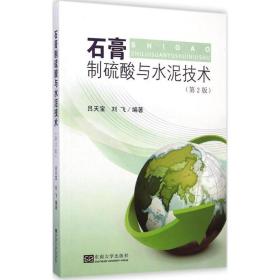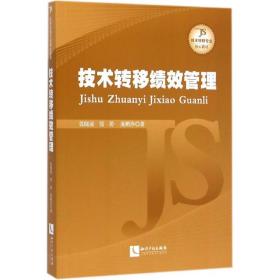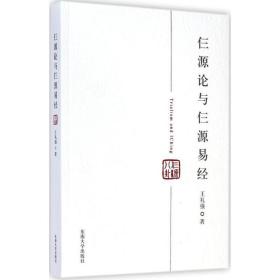
efl中国语境下二语写作纠正反馈机制研究 语言-汉语 王昕 新华正版
语言-汉语 新华书店全新正版书籍 支持7天无理由
¥ 57.55 6.5折 ¥ 89 全新
库存8件
作者王昕
出版社中国社会科学出版社
ISBN9787520345439
出版时间2019-08
版次1
装帧平装
开本其他
页数256页
字数258千字
定价89元
货号xhwx_1201926137
上书时间2023-12-25
- 最新上架
商品详情
- 品相描述:全新
- 正版特价新书
- 商品描述
-
目录:
chapter 1 : introduction
1.1 context analysis
1.1.1 efl context in china
1.1.2 context of the study
1.2 outline of the study
chapter 2 : literature review
2.l form-focused instruction(ffi)in sla
2.1.1 naturalistic exure vs.formal instruction
2.1.2 focus on forms(fonfs) vs.focus on form(fonf)
2.1.3 explicit vs.implicit knowledge and learning
2.1.4 the role of grammar instruction in pedagogy
2.2 itive evidence vs. evidence in sla
2.3 corrective feedback in l2 writing
2.3.1 itions on corrective feedback in l2 learning
2.3.1.1 arguments against corrective feedback
2.3.1.2 arguments for corrective feedback
2.3.1.3 types of corrective feedback
2.3.2 perceptions of corrective feedback in l2 learning
2.3.2.1 perceptions
2.3.2.2 itive perceptions
2.3.3 factors in relation to corrective feedback
2.3.3.1 prior learning experiences
2.3.3.2 proficiency level
2.3.3.3 cultural factor
2.4 next step for classroom practice
2.4.1 challenges
chapter 3 : methodology
3.1 research questions
3.2 participants
3.3 dependent and independent variables
3.4 data collection and analysis
3.5 research question # 1
3.5.1 data collection
3.5.2 data analysis
3.6 research question # 2 & # 3
3.6.1 questionnaires
3.6.1.1 data collection
3.6.1.2 data analysis
3.6.2 interview
3.6.2.1 data collection
3.6.2.2 data analysis
3.6.3 classroom observation
chapter 4: quantitative results: pretest, ttest and delayed ttest
4.1 rq1 : overall effectiveness of cf and the type of cf in relation to studentsimprovement in l2 writing accuracy
4.1.1 descriptive statistics for indirect corrective feedback ( indirect cf) group
4.1.2 descriptive statistics for feedback on content (fc) group
4.1.3 descriptive statistics for direct corrective feedback (direct cf) group
4.1.4 descriptive statistics for across group parison
4.1.5 inferential statistics for within group parisons on overall errors
4.1.6 inferential statistics for within group parisons on individual errors
4.1.7 inferential statistics for across group parisons on overall errors
4.1.8 inferential statistics for across group parison on individual errors
chapter 5 : mixed methods results: questionnaires
5.1 results for questionnaire 1
5.1.1 responses from indirect cf group
5.1.2 responses from content feedback (fc)group
5.1.3 responses from direct cf group
5.1 .g parison of results across the three grou
5.2 results for questionnaire
5.2.1 responses from indirect cf group
5.2.2 responses from content feedback (fc) group
5.2.3 responses from direct cf group
5.2.4 parison of results across the three grou
5.3 student responses to the open-ended questions in questionnaire 1
5.3.1 indirect cf group
5.3.2 content feedback (fc) group
5.3.3 direct cf group
chapter 6 : qualitative results: interviews and classroom observation
6.1 responses to student interview
6.1.1 question 1
6.1.2 question 2
6.1.3 question 3
6.1.4 question 4
6.1.5 question 5
6.1.6 question 6
6.1.7 question 7
6.2 responses to teacher interview
6.3 report from classroom observation
chapter 7 : discussion
7.1 quantitative results
7.1.1 time effect of feedback on overall errors for each group
7.1.2 time effect of feedback on individual error types for each group
7.1.3 group difference of feedback on overall errors
7.1.4 group difference of feedback on individual error types
7.1.5 conclusion
7.1.5.1 potential factors and reasons
7.2 mixed-methods results
7.7.1 questionnaire 1
7.2.2 questionnaire 2
7.2.3 conclusion
7.3 qualitative results
chapter 8 :implications, remendations and conclusion
8.1 summary of results
8.2 pedagogical implications and remendation for efl teachers
8.2.1 considering learner factors
8.2.2 developing self-correction strategies
8.2.3 focused cf instead of prehensive correction
8.2.4 integrating grammar instruction
8.2.5 designing appropriate learning materials in class
8.3 strength
8.4 limitations
8.5 future direction
8.6 conclusion
references
appendix a gra criteria for linguistic accuracy
appendix b test prompts
appendix c questionnaires
appendix d interview questions in chinese
appendix e examples of student errors across pretest, ttest, and delayed ttest in the three grou
appendix f text lengths
appendix g examples of students responses to the open-ended questions in questionnaire one
appendix h abbreviations
内容简介:
外相关学者在二语得和二语写作领域对纠正反馈问题进行了持续研究。然而,对于纠正反馈的效应,迄今仍未形成一致结论。纠正反馈的参与主体具有“双元”,即虑到纠正反馈的特,有效的纠正反馈需要者和学者的共同参与。这意味着参与双方的偏好、经验和积极等个体特征对纠正反馈的效果具有明显影响。显然,二语者和学者对纠正反馈的认知偏差实际上导致了纠正反馈研究和实践的困境:一方面,纠正反馈具有认知的同质,所有参与者都认可其在写作准确度提高方面的积极作用;另一方面,纠正反馈具有认知的异质,不同参与者对其影响路径和程度的认知存在明显个体;这一共与个的矛盾加剧了纠正反馈研究的困难。
作者简介:
王昕山东青岛人2009年获青岛大学英语学士,2013年获美国北亚利桑那大学应用语言学和第二外语双硕士,2017年获美国北亚利桑那大学教育博士。于2007年被选为交换生公派赴美国密苏里州立大学交流学。美国应用语言学,语料库语言学和二语写作协会成员。现为青岛大学外语学院助理教授。主要研究领域为应用语言学、语料库语言学、二语得。长期跟踪应用语言学领域研究动态,具有扎实的研究基础和研究经验。公开发表国际学术期刊及会议10余篇,参与外人文社科项目5项。目前主要从事译及学术写作的与研究工作。
— 没有更多了 —













以下为对购买帮助不大的评价